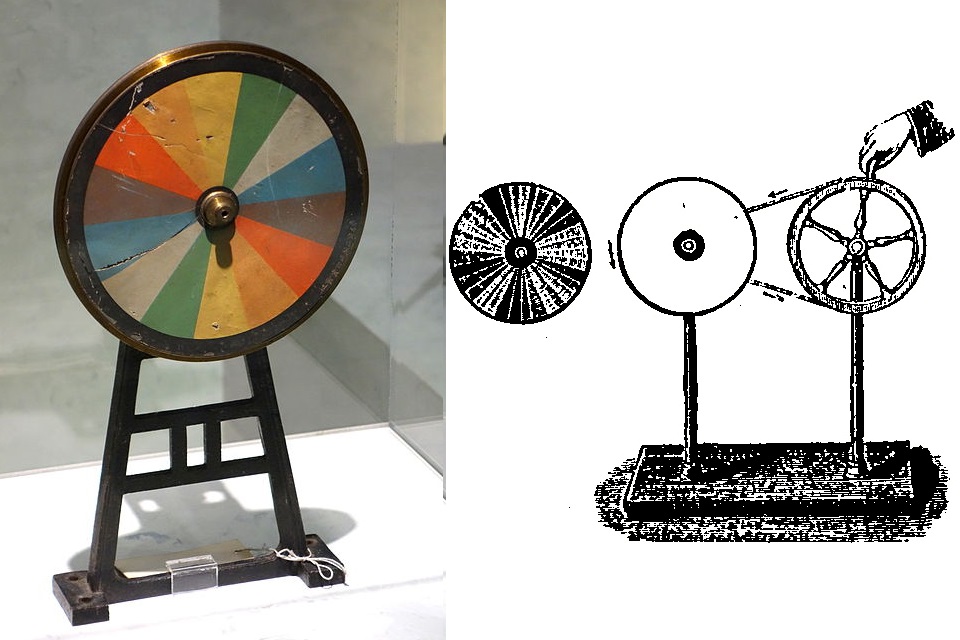

The Newton disc is a well-known physics experiment with a rotating disc with segments in different colors (usually Newton’s primary colors: red, orange, yellow, green, blue, indigo, and violet) appearing as white (or off-white or gray) when it spins very fast.
This type of mix of light stimuli is called temporal optical mixing, a version of additive-averaging mixing.
Many modern sources state that Isaac Newton himself used a disc with colored sectors to demonstrate how white light was actually the compound of the primary colors. However, none seem to refer to a historical source for this.
Ptolemy and Ibn al-Haytham described additive optical mixing with turning wheels and spinning tops hundreds of years before Newton, but they did not use primary colors to get the (off-)white result of the Newton disc.
Transparent variations for magic lantern projection have been produced.
History
Around CE 165 Ptolemy described in his book Optics a rotating potter’s wheel with different colors on it. He noted how the different colors of sectors mixed together into one color and how dots appeared as circles when the wheel was spinning very fast. When lines are drawn across the axis of the disc they make the whole surface appear to be of a uniform color. “The visual impression that is created in the first revolution is invariably followed by repeated instances that subsequently produce an identical impression. This also happens in the case of shooting stars, whose light seems distended on account of their speed of motion, all according to the amount of perceptible distance it passes along with the sensible impression that arises in the visual faculty.”
Porphyry (circa 243-305) wrote in his commentary on Ptolemy’s Harmonics how the senses are not stable but confused and inaccurate. Certain intervals between repeated impressions are not detected. A white or black spot on a spinning cone (or top) appears as a circle of that color and a line on the top makes the whole surface appear in that color. “Because of the swiftness of the movement we receive the impression of the line on every part of the cone as the line moves.”
In the 11th century Ibn al-Haytam, who was familiar with Ptolemy’s writings, described how colored lines on a spinning top could not be discerned as different colors but appeared as one new color composed of all of the colors of the lines. He deducted that sight needs some time to discern a color. al-Haytam also noted that the top appeared motionless when spun extremely quick “for none of its points remains fixed in the same spot for any perceptible time”.
On 6 February 1671/72 Isaac Newton wrote a paper about the experiments he had been conducting since 1666 with the refraction of light through glass prisms. He concluded that the different refracted rays of light – well parted from others – could not be changed by further refraction, nor by reflection or other means, except through mixture with other rays. He thus found the seven primary colors red, yellow, green, blue, “a violet-purple”, orange and indigo. When mixing these rays he found that “the most surprising and wonderful composition was that of whiteness” requiring all the primary colors “mixed in a due proportion”.
In his book Opticks (1704) Newton describes a device with prisms, a lens and a large moving comb with teeth causing alternating colors to be projected successively. “But if I so much accelerated the Motion, that the Colours by reason of their quick Succession could not be distinguished from one another, the Appearance of the single Colours ceased. There was no red, no yellow, no green, no blue, nor purple to be seen any longer, but from a Confusion of them all there arose one uniform white Colour.”
Source From Wikipedia